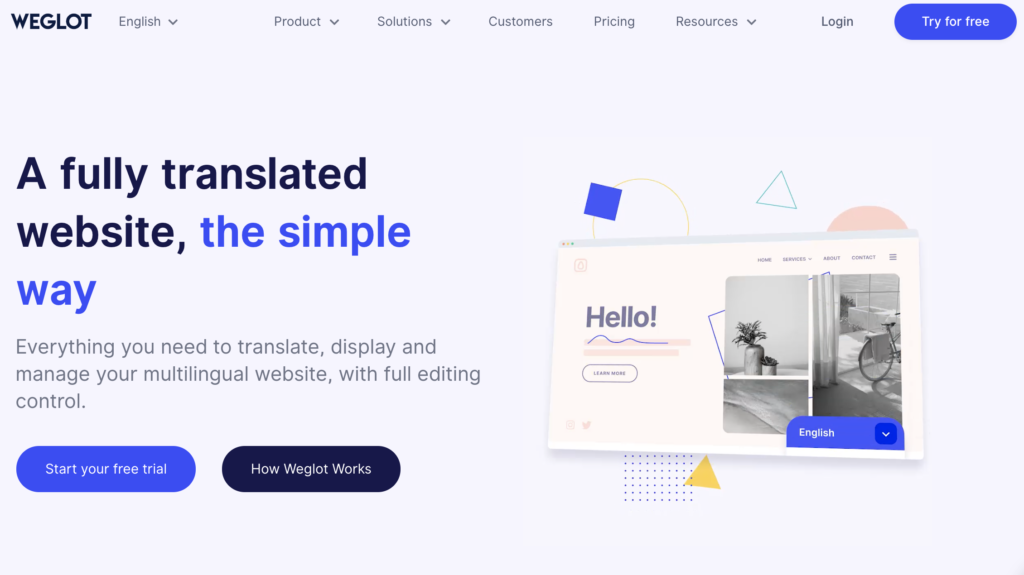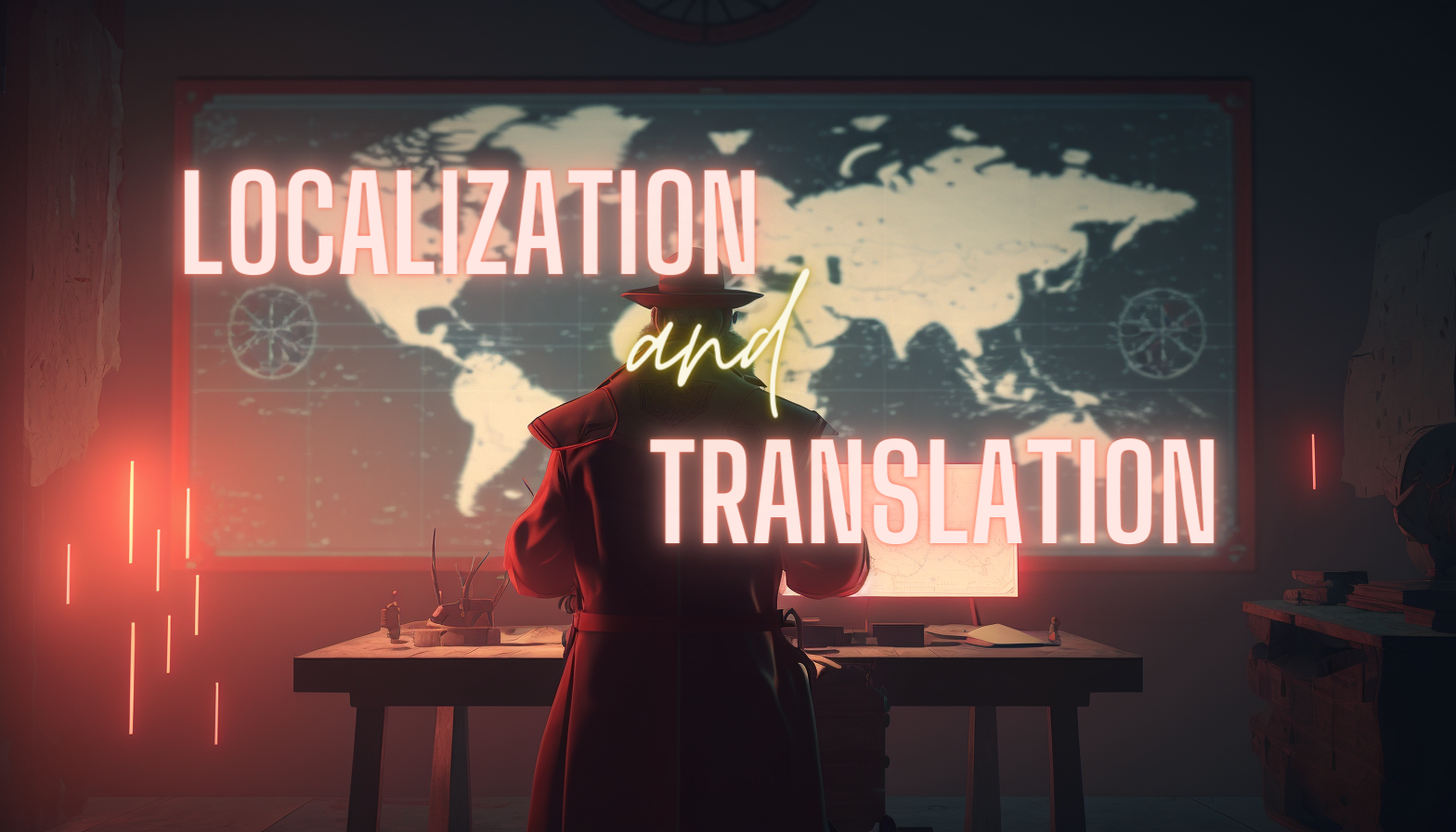In today’s globalized world, reaching a wider audience and expanding into new markets is essential for businesses to thrive. Website localization and translation are crucial steps in achieving this goal.
Website localization is the process of adapting a website’s content, design, and cultural elements to provide a relevant experience for a new target audience. This includes language translation, image and video replacement, and design adaptation. On the other hand, website translation is the process of translating the content of a website into different languages.
The importance of website localization and translation cannot be overstated. According to Forrester Research, more than one-third of internet users are non-native English speakers. Visitors are also more likely to stay on a website for twice as long if it is in their own language. Therefore, by localizing and translating their website, businesses can reach a global audience, expand into new markets, and increase international sales.
In the following sections, we will explore the difference between website localization and translation, the process of website localization, the benefits of localization, and the importance of localization for SEO. We will also discuss the best practices for website localization and the tools available to make the process more efficient.
Website Localization vs Website Translation
Website localization and website translation are two terms that are often used interchangeably but refer to different processes. While both involve translating content into other languages, there are some key differences between both.
Website localization is the process of adapting a website through language, design, and cultural elements to provide a relevant experience for a new target audience. It goes beyond simply translating text and includes image and video replacement, multilingual SEO, and design adaptation. Localization also takes into account cultural differences such as symbols, colors, and layout, ensuring that the website is culturally appropriate for the target audience.
On the other hand, website translation is the process of translating the content of a website into different languages. While translation is a core aspect of website localization, it is just one piece of the puzzle. Website localization is a complete solution that includes aspects such as formatting, image replacement, and SEO.
The key difference between those two is that website localization involves a more comprehensive approach that takes into account cultural differences and adapts the website to the target audience, while website translation simply involves translating the content of the website into other languages.
Approaching Website Localization and Translation
There are several steps to consider.
First and foremost, it is essential to determine the target audience and identify the languages they speak. Once the target languages are identified, the content of the website must be translated into those languages.
The next step is to consider the website design and cultural elements that will make the website relevant to the target audience. This may involve adapting images and videos to fit the cultural norms and preferences of the target audience, as well as considering the overall website design to ensure it is appropriate for the target culture.
In addition to translation and design, website localization also involves adapting the website’s SEO strategy for the target audience. This includes researching and incorporating relevant keywords and phrases in the target language, as well as adapting meta tags and descriptions to ensure they are culturally appropriate and effective in the target market.
It is important to note that website localization is not a one-time process. As the website and its content evolve, so should the localization efforts. Ongoing monitoring and updates are necessary to ensure the website remains relevant and effective for the target audience.
Overall, website localization and translation are essential for reaching a global audience and expanding into new markets. By considering the language, design, and cultural elements of the target audience, businesses can create a relevant and engaging experience for their users, leading to increased international sales and success in the global marketplace.
Techniques for Website Localization and Translation
Localization and translation are complex processes that require various techniques to achieve the desired result. In this section, we will discuss some of the most commonly used techniques in those domains.
Techniques for Website Localization
- Language Adaptation: The language is the most critical aspect. The content of a website needs to be translated into the target language, and special attention should be paid to cultural and regional variations.
- Design Adaptation: Localization involves adapting the website’s design and layout to match the local audience’s preferences. This process includes modifying colors, images, and layout to match the cultural expectations of the target audience.
- Cultural Adaptation: it involves adapting the website’s content to reflect the values, norms, and beliefs of the target culture. This includes adapting the tone, style, and content to match the local culture’s sensibilities.
Techniques for Website Translation
- Human Translation: it involves the use of professional translators to translate website content. This technique ensures high-quality and accurate translations that reflect the nuances of the target language and culture.
- Machine Translation: it involves using software to translate website content. While machine translation is fast and cost-effective, the quality can be inconsistent and may require human editing.
- Hybrid Translation: it involves using a combination of human and machine translation to achieve high-quality, cost-effective translations. This technique uses machine translation as a first pass, followed by human editing to ensure accuracy and quality.
In conclusion, these techniques require careful consideration of language, design, and cultural adaptation. Companies must choose the right techniques for their projects to ensure the success of their efforts in reaching a global audience.
Tools and Services for Website Localization and Translation
The process of website localization/translation can be complex and time-consuming, but fortunately, there are various tools and services available to streamline the process and make it more efficient.
One popular automated website localization tool is Weglot. This tool detects and translates all website content automatically without requiring manual content detection and extraction.
It also allows for manual editing of automated translations in the context of the website and offers the option to order high-quality professional translations directly from the dashboard. Using a tool like Weglot can reduce the workload of a localization project and streamline the workflow with a user-friendly interface.

In addition to automated tools, professional website translation services like Language Scientific can provide expertise and guidance throughout the website localization and translation process. These services include website localization analysis, translation of website content, localizing layout and site navigation, adapting pictures to the audience, localizing symbols, adapting colors to cultures, localization testing and QA, and localization engineering. Language Scientific can also advise on best practices and techniques to maintain consistent output and reduce costs for reaching a global marketplace.
Using these tools and services can greatly benefit businesses looking to expand into new markets, reach a global audience, and increase international sales. It is important to carefully consider the options available and choose the tools and services that best fit your needs and budget.
Benefits of Website Localization and Translation
In today’s interconnected world, businesses that want to compete on a global level must ensure that their websites are accessible and appealing to a diverse range of audiences. Website localization and translation play a key role in achieving this, offering a number of benefits for businesses that invest in these services.
- Expand into new markets: By localizing and translating their website content, businesses can more easily reach new markets and expand their customer base. This is especially important for businesses looking to enter markets where English may not be the primary language, as research has shown that consumers are more likely to make purchases from websites that offer content in their native language.
- Reach a global audience: In addition to expanding into new markets, website localization and translation allow businesses to reach a global audience. By providing content in multiple languages, businesses can increase their visibility and attract customers from all over the world.
- Increase international sales: Website localization and translation can also help businesses increase their international sales. By offering content in multiple languages, businesses can make it easier for customers to make purchases and build trust with them by demonstrating a commitment to understanding their needs.
- Improve user experience: Finally, website localization and translation can improve the user experience for visitors to a website. By providing content in their native language and tailoring it to their cultural preferences, businesses can make it easier for visitors to navigate their website and find the information they need. This, in turn, can help increase engagement and reduce bounce rates.
In conclusion, website localization and translation are essential tools for businesses that want to compete in the global marketplace. By investing in these services, businesses can expand their reach, increase sales, and improve the user experience for their customers around the world.
Website Localization and SEO
Website localization and SEO are two closely related concepts. Localization in SEO refers to the practice of optimizing a website’s content, design, and technical elements to rank higher in local search results for specific geographic locations.
Website localization is crucial for SEO because it helps search engines understand that a website is relevant and useful to users in a particular region. This can lead to higher visibility and traffic from local search results, which can ultimately lead to increased sales and revenue.
One of the most effective strategies for local SEO is to use localized keywords and phrases throughout the website’s content and meta tags. This includes using location-specific keywords in page titles, descriptions, headers, and image alt tags. Additionally, creating location-specific landing pages for each geographic market can help improve the website’s relevance and ranking in local search results.
By implementing website localization and SEO strategies, businesses can improve their online visibility and attract more qualified traffic from their target markets. This can lead to increased conversions, higher revenue, and long-term business growth.
Bottom Line
Website localization and translation are essential for businesses that want to reach a global audience and expand into new markets. In today’s digital age, businesses need to go beyond language translation and consider cultural nuances and design elements to provide a seamless user experience.
Automated website localization tools like Weglot and professional website translation services like Language Scientific can provide businesses with the resources needed to effectively localize and translate their websites. These services can help businesses improve user experience, reach a global audience, increase international sales, and achieve long-term success.
In addition, website localization plays a crucial role in SEO by ensuring that a website is optimized for local search queries. This includes using local keywords and phrases, creating localized content, and providing accurate location data. By implementing a comprehensive localization strategy, businesses can achieve better search rankings, increased traffic, and improved brand visibility in local markets.
In conclusion, website localization and translation are critical components of a successful global business strategy. Investing in these services can provide businesses with numerous benefits, including increased revenue and improved customer satisfaction. As such, businesses should consider website localizat
ion and translation as a long-term investment for success in the global market.
And there you have it! With website localization and translation, you can unlock a whole new world of opportunities and connect with audiences on a global scale. Start expanding your reach today!
To create this article on website localization and translation, we referred to several authoritative sources, including :
https://www.euroconferences.info/proceedings/2005_Proceedings/2005_Sandrini_Peter.pdf




